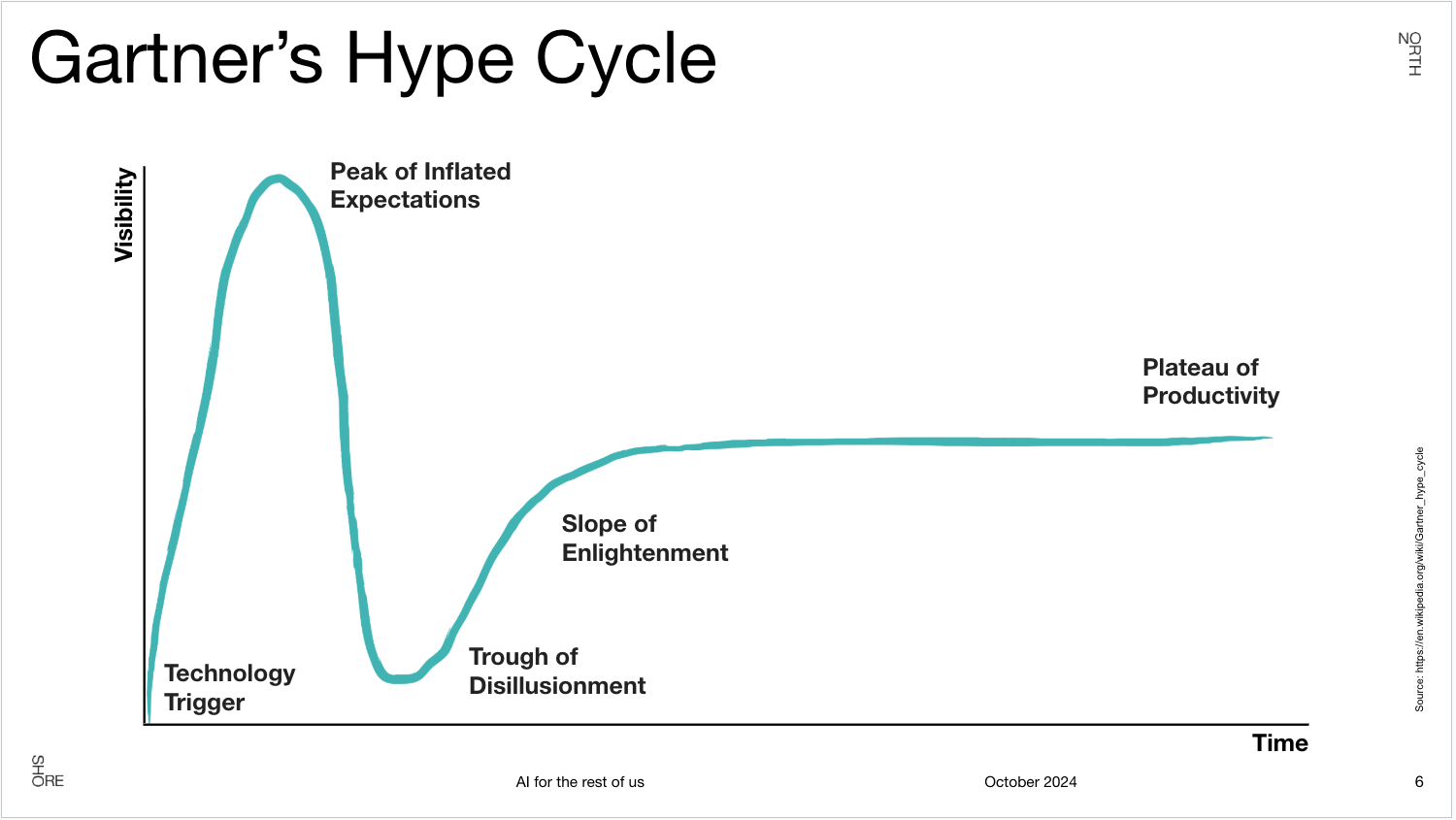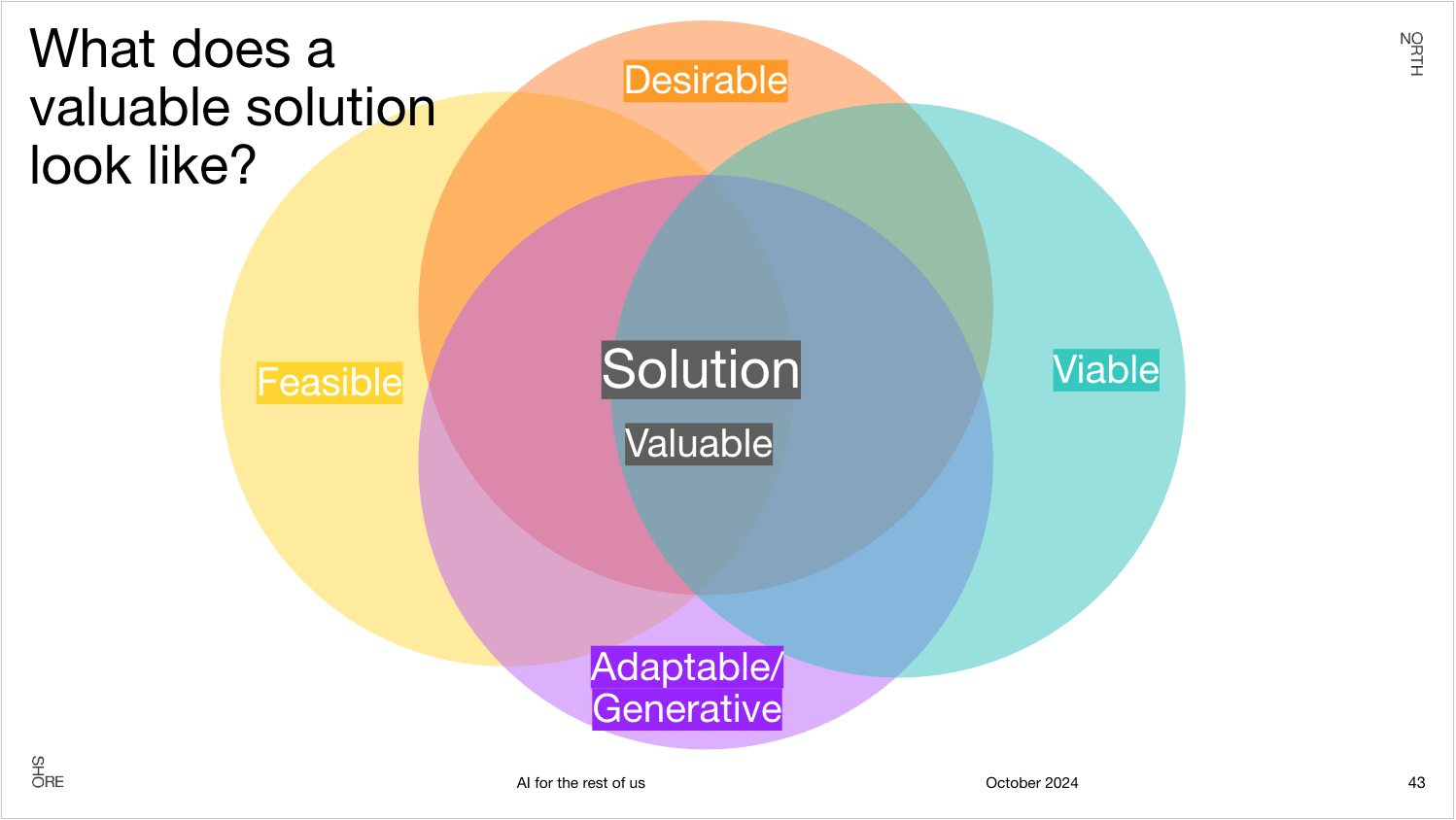Why AI transformation is failing… and what to do about it
95% of AI transformations so far have failed to create the expected return on investment. This new research from MIT has led to a number of eye-catching headlines recently.
I wish I could say I find this surprising, but given the statistics I often cite about 70–95% of digital transformations failing, this feels like the same old story with a slightly new cast of characters.
In fact, Gartner has already called out the fact that when it comes to AI, we’ve entered the “trough of disillusionment” from its Hype Cycle.
Gartner’s Hype Cycle: A slide from my 2024 talk at the “AI for the rest of us” conference.
In one of the articles in my series on this topic with data scientist Noelle Saldana, we wrote, “We are quickly heading towards the trough of disillusionment; we’re about to learn the hard way that AI is not infallible and not a quick fix solution to everything.”
And given this latest research and round of headlines, I think it’s safe to say we are squarely in the disillusionment era.
Why are we here (again)?
So why are we here? The simple explanation is that the majority of organisations are taking an unstructured approach to finding uses for generative AI. They’re starting with the technology (the solution) instead of with a problem that genuinely needs to be solved.
If you’ve read any of my work or heard me speak, you might be tired of hearing me repeat this point, but it’s just as valid as ever: Solutions almost always need a juicy enough problem and an excellent understanding of how the solution fits into their intended users’ lives.
I’m seeing most companies repeat the same mistakes from earlier digital transformation efforts: They’re ditching discovery (the process of identifying potential problems to solve) and jumping straight into execution without understanding if there’s any purpose to their proposed solution. This approach is repeating the old agile problem of quickly making something that shouldn’t have been made at all.
Does it still make sense to invest in problem discovery and design work? This is a common—but problematic—question that keeps coming up today. Especially since generative AI tools accelerate the delivery cycle. With a few simple prompts and little technical knowledge, you can “vibe code” a working website or app within minutes. And of course, this can be alluring, but when we neglect human-centred design and product mindset, that means we haven’t validated whether this is even the right thing to make.
Remember: It all starts with solving a problem that’s important for both your customers AND your business
The fact is: We’ve been here before. The patterns we’re experiencing today are familiar from earlier digital transformation efforts and can often be traced back to not having any grounding in solving high-value, prioritised customer problems.
We need to avoid this common pattern of going from idea to black box execution, which leads to hit-and-miss results, and replace it with firsthand understanding of the need; comparison to other needs in terms of size, complexity, competitive edge, and addressable market; and iteration informed by user feedback until we achieve a desirable, feasible, and viable solution that can scale.
The framing we need to apply to make sure our solution is valuable: A slide from my 2024 “AI for the rest of us” talk.
It’s worth reiterating: Valuable solutions exist at the intersection of being desirable, viable, adaptable/generative, and feasible.
Successful solutions are never just one dimension, like technically feasible. They also need to solve a user’s problem better than their current way of doing things. And they need to adhere to a viable business model that can scale.
When it comes to viability in particular, people are slow to understand the expense, risks, and dependencies in adopting AI technologies. You need to be able to afford to run the service, make a profit, and keep your business and customers secure.
As Zamina Ahmad called out in her talk at Product at Heart 2025, simply adopting AI tools doesn’t make you an AI company. And while you’re focused on optimizing administrative processes, your competitors are rebuilding entire customer journeys.
You run the same risk when building AI solutions. If you don’t go through the proper solution definition process, you can easily fall into the trap of making people 5% faster instead of creating truly innovative and exponential improvements for them.
Finding a way past the trough of disillusionment
As someone who has lived through the previous hype cycle and who helps organisations navigate their transformations today, I don’t want to leave you stuck in the trough of disillusionment. AI is not to blame. Our approaches to figuring out what to do with it fuel this disillusionment. I want to help you be successful with adopting AI purposefully.
Here are a few potential next steps for you:
I regularly work with organisations to transform toward purposeful AI. If this is something you’d like to explore, please get in touch to book a discovery call and learn more about my consulting services.
I am currently writing a book on the intersection of technical and product adoption of AI’s possibilities. We are looking for a few more case studies to include, so if you have an AI transformation story to share, please reach out!
I’ve been preparing a talk with my longtime collaborator Shahzia Holtom at AI for the rest of us, where we’ll be sharing our firsthand experiences of AI transformation fails on 16 October in London. Come join us there!



